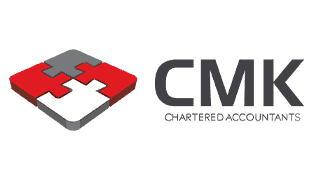News

Why Do I Have No Cash but Still Need to Pay Taxes?
THIS BLOG IS BROUGHT TO YOU BY:

Being a dairy farmer has its share of challenges, and understanding tax obligations is one of them. It’s important to remember that you’re not alone in this. Many farmers, just like you, might find themselves in a situation where they have no cash in the bank but still have to pay taxes. Let’s break down why this happens.
UNDERSTAND PROFIT VS CASH FLOW
Empower yourself by understanding the difference between profit and cash flow. On paper, you might show a profit for the year, but that doesn’t necessarily mean you have cash available. This knowledge is a powerful tool in managing your farm’s finances.
Profit
Profit is the amount left over after all expenses have been deducted from your revenue. It measures your business’s financial performance over a specific period.
Cash Flow
Cash flow, on the other hand, is the actual amount of cash moving into and out of your account. It includes all cash receipts (like sales and loans) and payments (like expenses and debt repayments).
You can have a situation where your farm shows a profit on paper because of non-cash expenses like depreciation, stock adjustments, accounts payable or accounts receivable. However, your cash flow is negative due to capital costs, drawings, taxes or loan repayments.
REASONS YOU MIGHT HAVE NO CASH BUT STILL OWE TAXES
Several factors can lead to having no cash on hand while still owing taxes:
Accounts Receivable and Payable
The milk that you haven’t been paid for yet needs to be included in your profit and loss statement because the revenue is recognised when the sale is made, not when the cash is received. This can be an issue when you have locked in a milk price of say $8.55 a KgMS but have only received $7.25 as you will need to include the additional $1.30 in your profit and loss and pay taxes on it even though you have not received the income. This increases your profit but not your immediate cash flow.
Livestock Increases
The way livestock is valued could be the subject of a whole extra blog post!
If you hold additional livestock at the end of the financial year, then the book cost that it is carried at could be higher, leading to additional taxable income, even though you never received any cash.
Loan Repayments
Loan principal repayments are not considered an expense for profit calculation purposes but are cash outflows. You may have significant loan repayments that reduce your cash flow without affecting your profit.
Drawings
Cash withdrawals from the business for personal expenditure are also not taxable deductions, but they do affect one’s overall cash position.
Depreciation and Other Non-Cash Expenses
Depreciation is a non-cash expense that reduces your taxable income but doesn’t affect your cash flow. For instance, if you’ve purchased new equipment for your farm, you can depreciate it over several years. This lowers your taxable income but doesn’t require an actual cash expenditure each year.
STRATEGIES TO MANAGE YOUR CASH FLOW AND TAX OBLIGATIONS
Understanding the reasons behind the ebbs and flows of the cash in your account can help you manage your finances better. Here are some things to consider:
1. Cash Flow Forecasting
Create a cash flow forecast to predict when you’ll have cash inflows and outflows. This can help you plan for times when cash might be tight, such as purchasing significant new equipment or paying taxes. There are now several tools that can help you monitor this. We use Figured as it is easy to use and links to the major accounting packages.
2. Tax Planning
Work with your accountant, who should understand agriculture. They can help you plan your taxes better, possibly deferring income or accelerating expenses to manage your tax liability. The timing of certain purchases, such as capital equipment and livestock, can make a massive difference to your taxable position.
3. Manage Receivables and Payables
Try to negotiate better payment terms with your suppliers, and the use of deferred payments that are more in line with your overall cash flow can help improve your overall cash position.
4. Monitor What You Have on The Farm
Keep an eye on your inventory levels and try to maintain a balance between having enough products that you use on the farm to meet demand and not tying up too much cash. Bought-in feed is an excellent example of this as you can’t manage without it, but it pays to track what you have on the farm.
CONCLUSION
It’s essential to understand that showing a profit on your farm doesn’t necessarily mean you have the cash to pay your taxes. By understanding the difference between profit and cash flow and implementing some planning, you can better manage your financial position.
If you need assistance with tax planning or cash flow management, please remember that CMK are here to help. We can put a plan in place that will help you navigate any challenges.
You’re not alone in this journey! Remember, many dairy farmers face similar issues, and with the right tools and knowledge, you can effectively manage your finances and ensure the sustainability and longevity of your farm.















